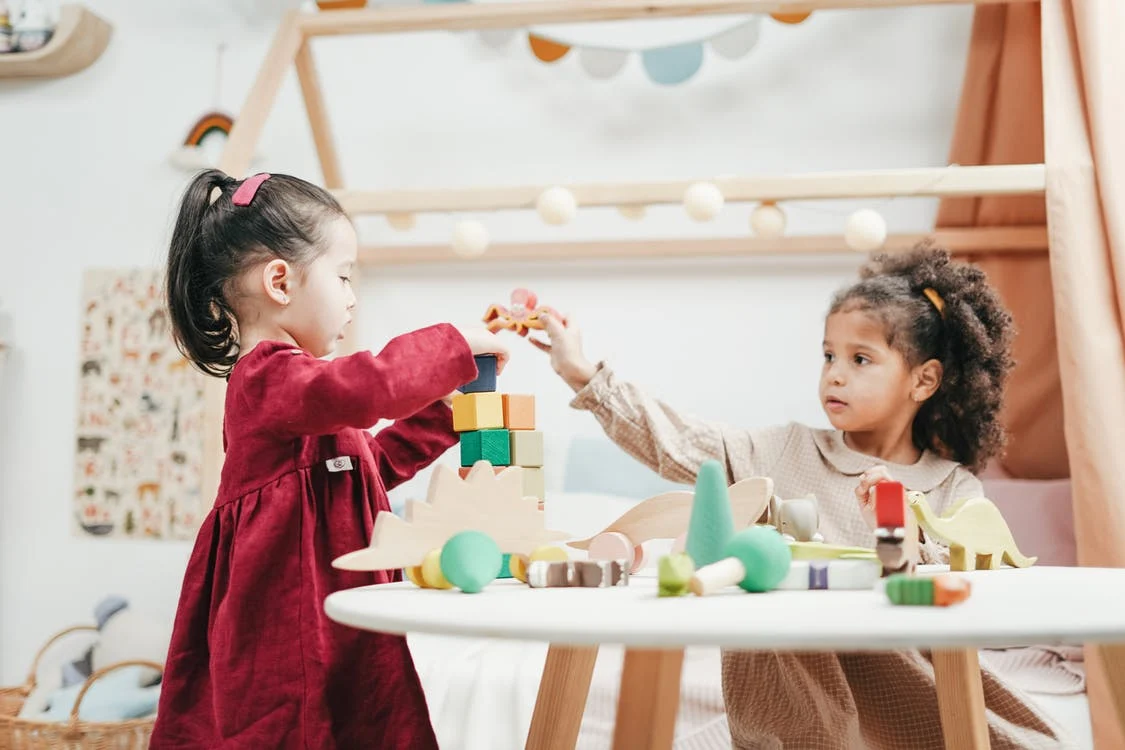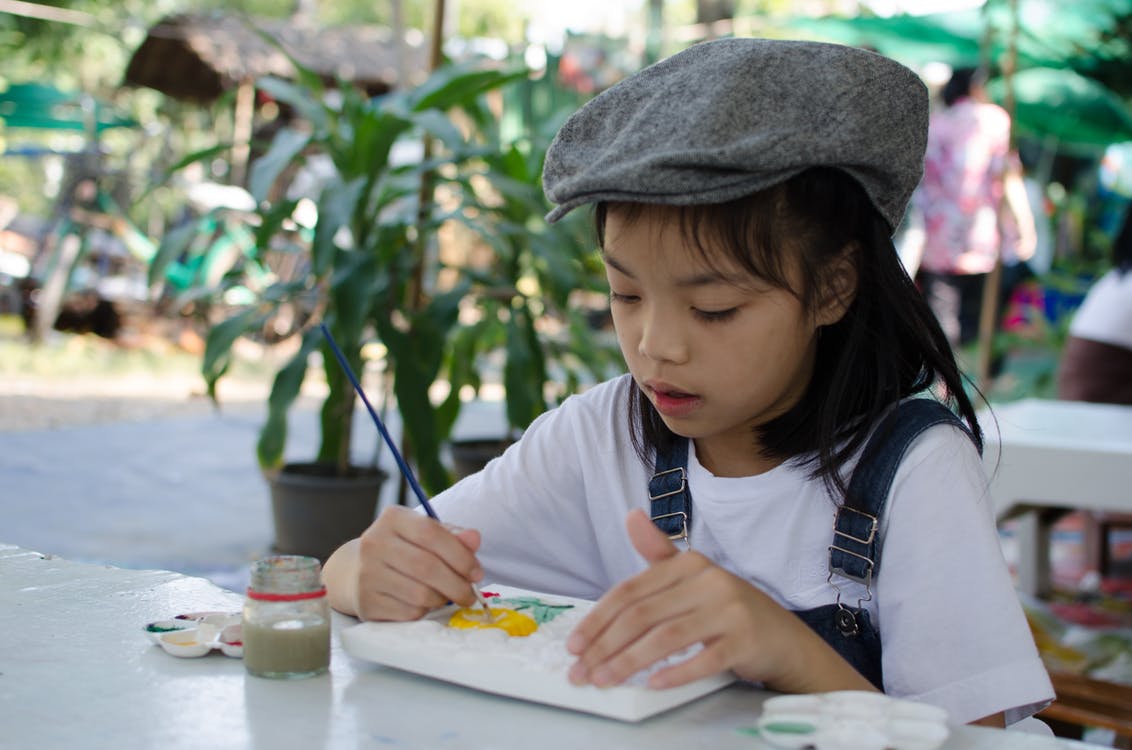How Painting Helps Develop Fine Motor Skills in Children
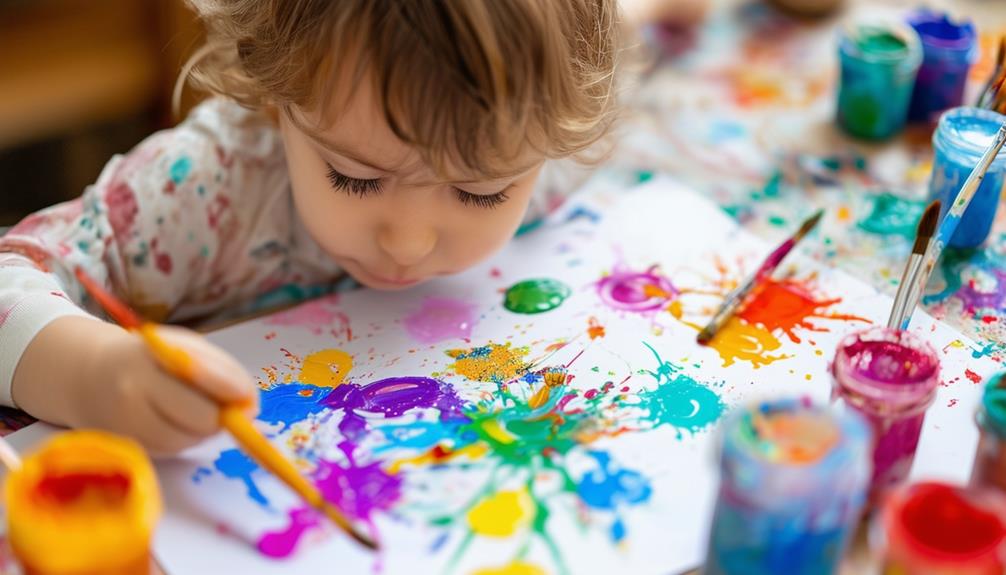
When children engage in painting, they do more than create colorful artwork. By holding brushes and manipulating various tools, they enhance their hand-eye coordination and improve their grip and dexterity. These activities involve precise movements, which help develop control and muscle strength. In addition to fostering creativity, painting also stimulates cognitive and sensory growth. To help your child benefit from painting without making it feel like a chore, provide a variety of materials and allow them to explore freely.
Benefits of Painting for Children
Painting offers numerous benefits for children's fine motor skill development. Engaging in painting activities not only provides fun but also enhances fine motor skills. Art activities introduce children to manipulating brushes and different tools, enriching their grip and hand control. The simple act of holding and moving a paintbrush strengthens hand muscles, leading to better control and precision.
Painting encourages intricate movements, promoting the refinement of fine motor skills. These activities require precise use of fingers and hands, helping children develop dexterity. With practice, they become more adept at controlling their hand and finger motions.
Furthermore, painting helps children practice coordination and spatial awareness, crucial components of overall motor development. Through art, they learn to position their hands and fingers to create desired shapes and lines. This practice not only benefits their artistic skills but also translates to improved fine motor abilities in everyday tasks. So, the next time your child picks up a paintbrush, remember they're not just creating art—they're developing essential skills.
Enhancing Hand-Eye Coordination
When your child engages in painting, they enhance their hand-eye coordination through visual guidance and precise brush strokes. By selecting colors and applying them accurately to the canvas, they improve their fine motor skills. This activity helps them translate visual ideas into controlled physical movements, thereby refining their spatial awareness and hand control.
Visual Guidance in Painting
Engaging in painting requires children to coordinate their hand movements with their visual input, thereby enhancing their hand-eye coordination and fine motor skills. The visual guidance involved in painting is crucial for children to execute precise hand movements. As they focus on their artistic expression, they learn to synchronize their visual perception with their hand actions, directly improving their hand-eye coordination.
When children pick up a paintbrush and start to paint, they are not merely creating art—they are also refining their fine motor skills. Painting encourages them to concentrate on where their brush meets the canvas, ensuring their strokes align with their visual intentions. This process demands a high level of coordination, fostering the development of these essential skills.
Moreover, the continuous practice of painting helps children improve their hand-eye coordination over time. Each brushstroke they make, guided by their visual input, contributes to better control and precision in their movements. This enhancement in fine motor skills through painting not only supports their artistic growth but also benefits other areas of their development, such as writing and tasks that require dexterity.
Precision in Brush Strokes
Engaging in precise brush strokes helps children develop their hand-eye coordination and fine motor skills. When kids paint, they need to control the brush with accuracy, which requires them to practice and refine their motor control abilities. This process strengthens their hand movements, crucial for tasks such as writing and drawing. As they adjust the pressure and direction of their brush strokes, they're not just creating art—they're enhancing their coordination and dexterity.
Painting encourages deliberate hand movements, improving the fine motor skills necessary for many everyday activities. The repetitive nature of brush strokes helps in strengthening hand muscles, making it easier for kids to perform detailed tasks. By focusing on precision, children learn to synchronize their hand movements with their vision, enhancing their overall motor control abilities.
Benefits of practicing precision in brush strokes include:
- Improved Hand-Eye Coordination: Enhances the ability to perform tasks requiring visual and motor skills.
- Strengthened Fine Motor Skills: Essential for writing, drawing, and other intricate activities.
- Enhanced Motor Control: Assists in adjusting hand movements for better task performance.
Coordinating Color Selection
Selecting and coordinating colors during painting activities significantly enhances children's hand-eye coordination. When kids choose and mix colors, they engage in small, precise movements, refining their fine motor skills. This process requires focusing on details, thereby improving their ability to match hues accurately.
As children participate in painting, they develop better spatial awareness and hand control. The precise application of colors necessitates constant coordination between their hand movements and visual perception. This coordination is essential for tasks requiring fine motor skills, both in art and everyday activities.
Consider the developmental impact of coordinating color selection:
| Aspect | Activity | Benefit |
|---|---|---|
| Color Selection | Choosing paint hues | Enhances decision-making |
| Mixing Colors | Blending paints | Refines fine motor skills |
| Matching Colors | Comparing colors on canvas | Improves hand-eye coordination |
| Applying Paint | Using brushes | Develops precise movements |
| Spatial Awareness | Positioning colors accurately | Enhances spatial understanding |
Strengthening Grip and Dexterity
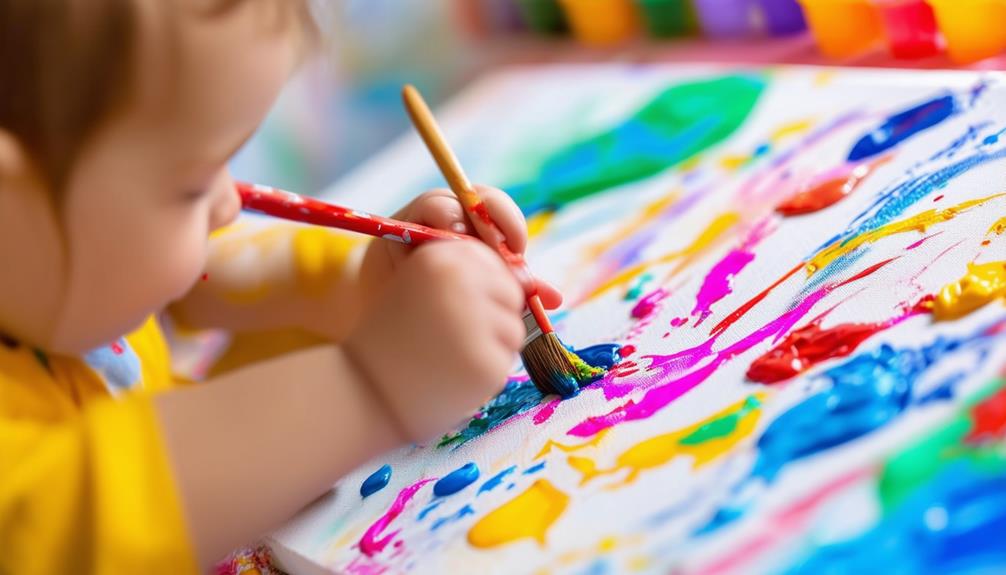
When children grab a paintbrush, they strengthen their grip and dexterity through the focused control required to create their artwork. Painting demands the use of fine motor skills, necessitating coordination between hand movements and visual guidance. This hand-eye coordination is crucial for tasks such as writing and drawing. By manipulating paintbrushes, children develop their hand muscles and refine their motor skills, enhancing their ability to perform everyday activities.
The act of painting involves more than just moving a brush across paper. Children must hold the brush correctly, apply the right amount of pressure, and execute precise movements. These actions collectively build strength in their hands and fingers, improving grip and overall dexterity.
Engaging in painting activities offers numerous benefits:
- Improved Hand Strength: Regular painting helps build the muscles in children's hands and fingers, essential for a strong grip.
- Enhanced Coordination: The process of painting improves hand-eye coordination, facilitating other fine motor tasks.
- Sensory Development: The tactile experience of manipulating paint and brushes enriches sensory processing, contributing to overall fine motor skill development.
Encouraging children to paint regularly can significantly benefit their motor skills and dexterity.
Developing Precision and Control
As children build grip strength and dexterity through painting, they develop the precision and control needed for detailed brushwork. Engaging in mark making requires careful management of hand movements to produce desired lines and shapes, naturally enhancing their fine motor skills.
Blending colors also contributes to developing precision and control. When children mix paints, they must manipulate the brush with specific pressure and strokes to achieve the right hues and gradients. This practice refines their hand movements and demonstrates how different pressures and motions affect the outcome.
Additionally, painting involves controlling brush pressure. Kids learn to adjust the force they apply to create varying textures and effects, further honing their motor skills. This ability is crucial for handling delicate tasks with care.
Muscle Development Through Art
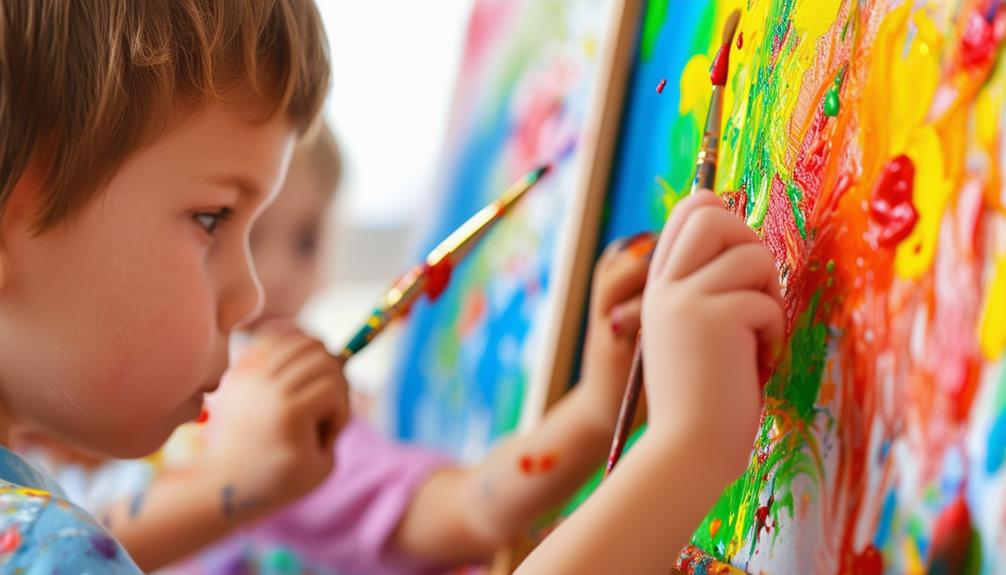
Engaging in painting activities significantly enhances children's fine motor skills by actively strengthening their hand and finger muscles. When kids handle paintbrushes, they are not only creating art but also exercising and developing crucial muscle groups. This muscle development is essential for various daily tasks that require precision and dexterity.
Painting tasks involve controlled movements and precise strokes, which contribute to improved hand-eye coordination. As children move the brush across the canvas, they learn to synchronize their hand movements with their visual perception. This practice is invaluable for enhancing coordination and overall dexterity. Additionally, handling different brush sizes and shapes necessitates adapting their grip and pressure, further refining their muscle control.
Moreover, engaging in painting activities heightens spatial awareness. Children must consider the placement of objects within their artwork, leading to a better understanding and control over spatial relationships. This awareness is crucial for activities beyond art, such as writing and other detailed tasks.
Here are a few benefits of encouraging children to paint:
- Enhances hand-eye coordination
- Develops muscle strength and dexterity
- Increases spatial awareness and controlled movements
Cognitive and Sensory Growth
Engaging children in painting activities stimulates both cognitive and sensory growth. Through the tactile experience of art, kids enhance their problem-solving abilities and sensory perception. When painting, they make numerous decisions—selecting colors, techniques, and styles—which challenges their brains to think critically and creatively.
The tactile aspect of painting is crucial for sensory development. As children dip their brushes into paint, feel its texture, and watch vibrant colors spread across the canvas, their senses are fully engaged. This sensory stimulation helps them understand various textures, shades, and subtle differences in paint consistency.
Painting also introduces problem-solving elements. Children encounter challenges like mixing colors to achieve the desired shade or correcting mistakes in their artwork. These experiences teach them to think quickly and develop effective solutions, skills valuable beyond the realm of art. By promoting both cognitive and sensory development, painting serves as a powerful tool for helping children grow and thrive in multiple dimensions.
Age-Appropriate Art Activities
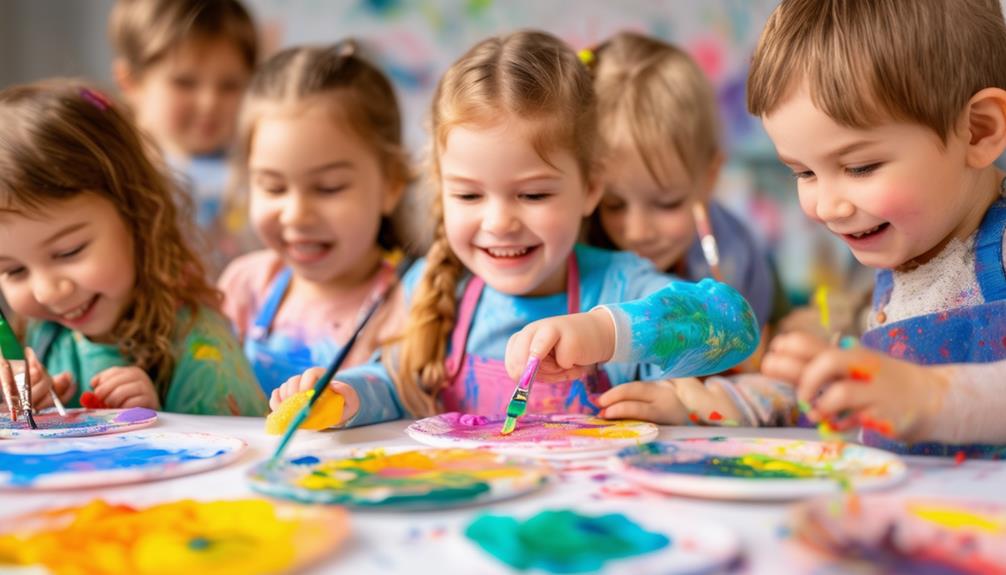
To nurture fine motor skills in children, introduce developmentally suitable art activities such as finger painting and using large brushes. These activities help refine their grasp and improve hand-eye coordination. Using chunky crayons is another excellent way to support fine motor development, allowing children to practice wrist movements and control.
Painting with watercolors and sponges also encourages bilateral coordination and finger strength. These activities not only enhance fine motor skills but also promote creativity by allowing kids to experiment with different textures and tools. Art projects like stamping and stenciling are highly beneficial for promoting hand dexterity and precision.
To make the most of these art activities, consider incorporating the following:
- Finger Painting: Excellent for sensory experiences and developing fine motor skills.
- Large Brushes: Improves hand-eye coordination and control.
- Chunky Crayons: Strengthens grip and precision.
Parental Support in Art Activities
As a parent, you play a crucial role in your child's artistic development by encouraging creative expression and providing a variety of materials. Supporting their artistic choices helps build their confidence and develop fine motor skills. Offering diverse art supplies can spark their imagination and foster a lifelong love for creating.
Encouraging Creative Expression
Support your child's creative expression by providing a variety of art materials such as paints, crayons, and clay. This encourages imaginative play and helps them make independent artistic decisions, nurturing both their creativity and confidence.
Engaging in art activities together strengthens your bond and shows that you value their creative pursuits. Emphasizing effort and exploration over perfection helps your child feel more confident to try new things and express themselves freely. The goal is to enjoy the process and learn from it, not to create a masterpiece.
Creating a safe and open environment for artistic exploration is crucial. Let your child know it's okay to make a mess and that there are no wrong answers in art. This freedom allows them to express their thoughts and emotions, providing a healthy outlet for self-expression.
- Encourage imaginative play by setting aside dedicated art time.
- Celebrate their efforts and creations, regardless of the outcome.
- Participate in their artistic activities to show your support.
Providing Diverse Materials
Providing a variety of art materials helps your child develop essential fine motor skills and enhances their creativity. By offering diverse art supplies such as paintbrushes, sponges, and different types of paints, you encourage your child to explore and refine their hand movements. This exploration is enjoyable and crucial for developing gripping techniques and finger strength.
Introducing materials like watercolors, acrylics, and finger paints allows your child to practice various ways of holding and using tools. This variety improves their hand-eye coordination and dexterity, which are vital for overall motor development. Encouraging experimentation with these materials can significantly enhance their precision and control in art activities.
Types of Art Supplies and Skills Developed
| Art Supplies | Skills Developed |
|---|---|
| Paintbrushes | Gripping techniques, hand movements |
| Sponges | Finger strength, hand-eye coordination |
| Different Paint Types | Dexterity, precision |
Providing diverse materials supports fine motor skill development, nurtures creativity, and fosters problem-solving abilities. Engaging in these art activities equips your child with valuable skills that extend beyond the canvas.
Encouraging Creative Expression

Children's creativity flourishes when they have the freedom to explore different colors, brush strokes, and artistic styles in their paintings. Encouraging creative expression is essential for their growth and development. When children engage in painting, they are not merely playing with colors; they are exploring and interpreting the world around them. Their choices of color, brush strokes, and artistic styles reflect their thoughts, emotions, and perceptions.
By allowing your child to experiment with painting, you nurture their creative expression. This process helps them develop a sense of individuality and confidence. They learn that there are no right or wrong answers in art, only unique perspectives and styles. As they handle the brush and decide on each stroke, they build fine motor skills and hand-eye coordination.
To make painting a more enriching experience, consider these tips:
- Provide a variety of paint colors and brushes: This offers endless possibilities for their artistic creations.
- Create a dedicated space for painting: A comfortable, mess-friendly area encourages regular artistic exploration.
- Display their artwork proudly: Showcasing their pieces boosts self-esteem and motivates further creative efforts.
Incorporating painting into their routine allows children to explore their creativity while simultaneously refining crucial motor skills.

